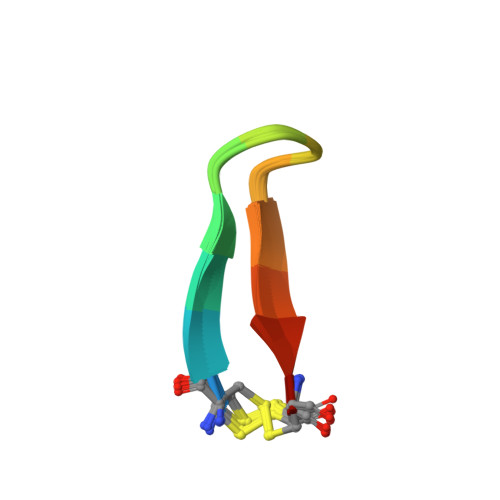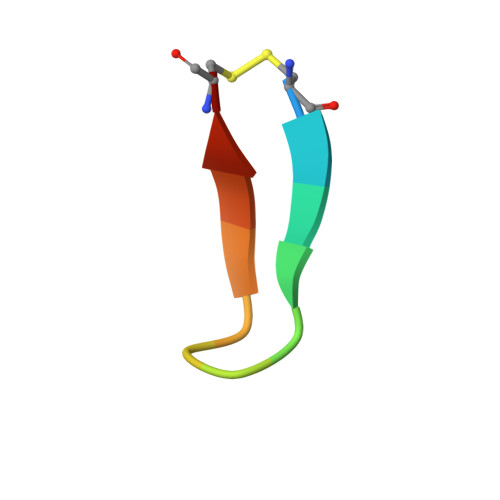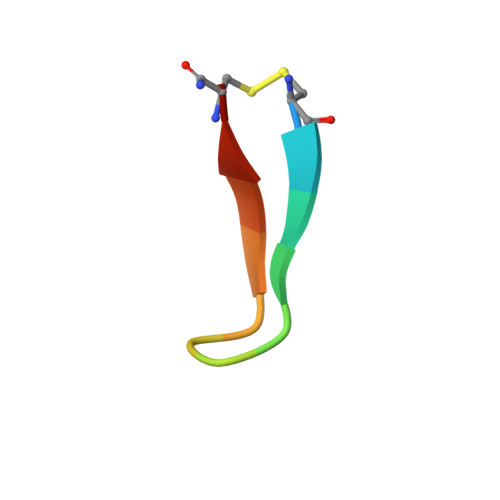BAFF/BLyS receptor 3 binds the B cell survival factor BAFF ligand through a discrete surface loop and promotes processing of NF-kappaB2.
Kayagaki, N., Yan, M., Seshasayee, D., Wang, H., Lee, W., French, D.M., Grewal, I.S., Cochran, A.G., Gordon, N.C., Yin, J., Starovasnik, M.A., Dixit, V.M.(2002) Immunity 17: 515-524
- PubMed: 12387744
- DOI: https://doi.org/10.1016/s1074-7613(02)00425-9
- Primary Citation of Related Structures:
1MPV - PubMed Abstract:
The TNF-like ligand BAFF/BLyS is a potent survival factor for B cells. It binds three receptors: TACI, BCMA, and BR3. We show that BR3 signaling promotes processing of the transcription factor NF-kappaB2/p100 to p52. NF-kappaB2/p100 cleavage was abrogated in B cells from A/WySnJ mice possessing a mutant BR3 gene, but not in TACI or BCMA null B cells. Furthermore, wild-type mice injected with BAFF-neutralizing BR3-Fc protein showed reduced basal NF-kappaB2 activation. BR3-Fc treatment of NZB/WF1 mice, which develop a fatal lupus-like syndrome, inhibited NF-kappaB2 processing and attenuated the disease process. Since inhibiting the BR3-BAFF interaction has therapeutic ramifications, the ligand binding interface of BR3 was investigated and found to reside within a 26 residue core domain. When stabilized within a structured beta-hairpin peptide, six of these residues were sufficient to confer binding to BAFF.
Organizational Affiliation:
Department of Molecular Oncology, Genentech, Inc., South San Francisco, CA 94080, USA.
















